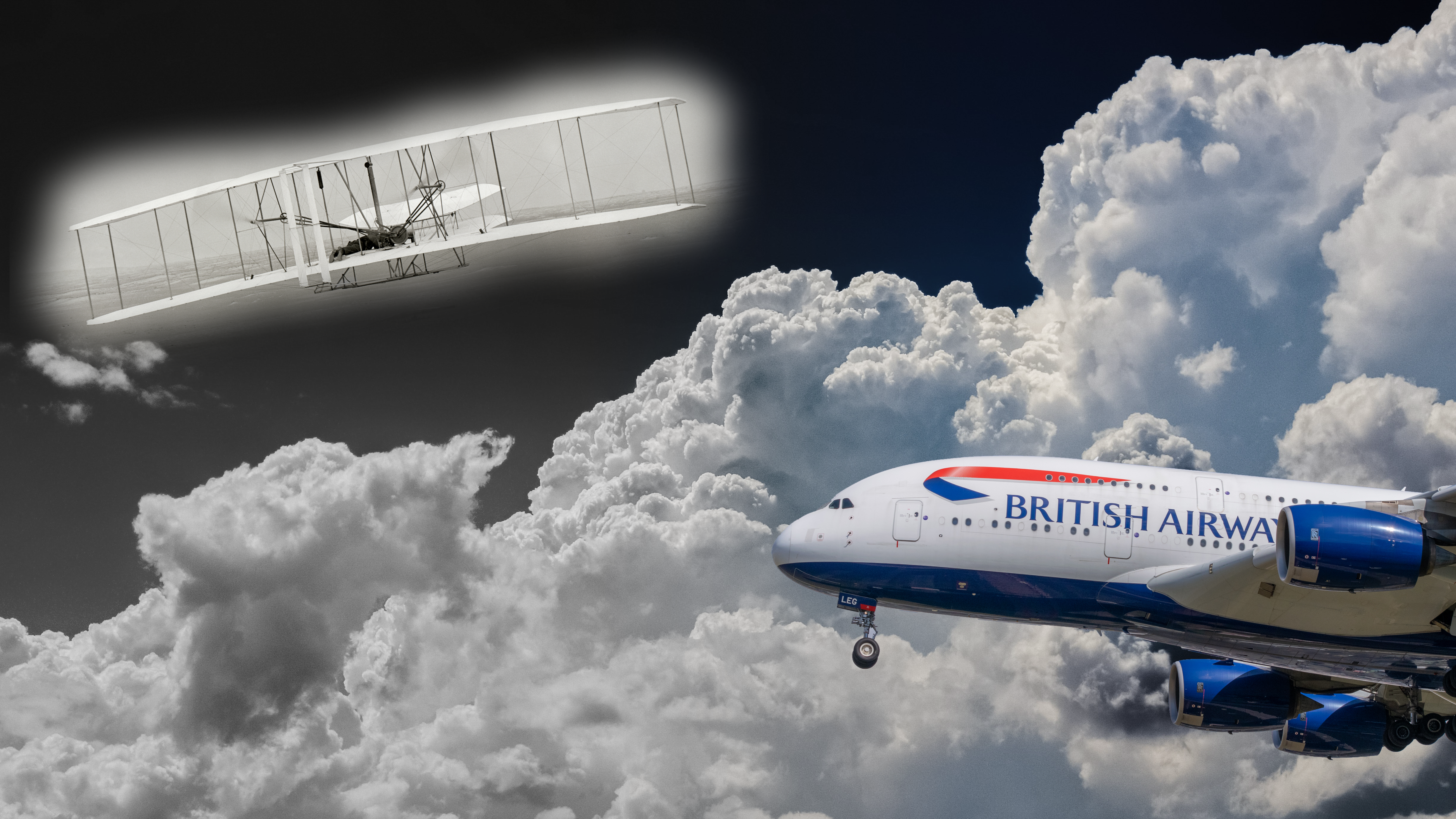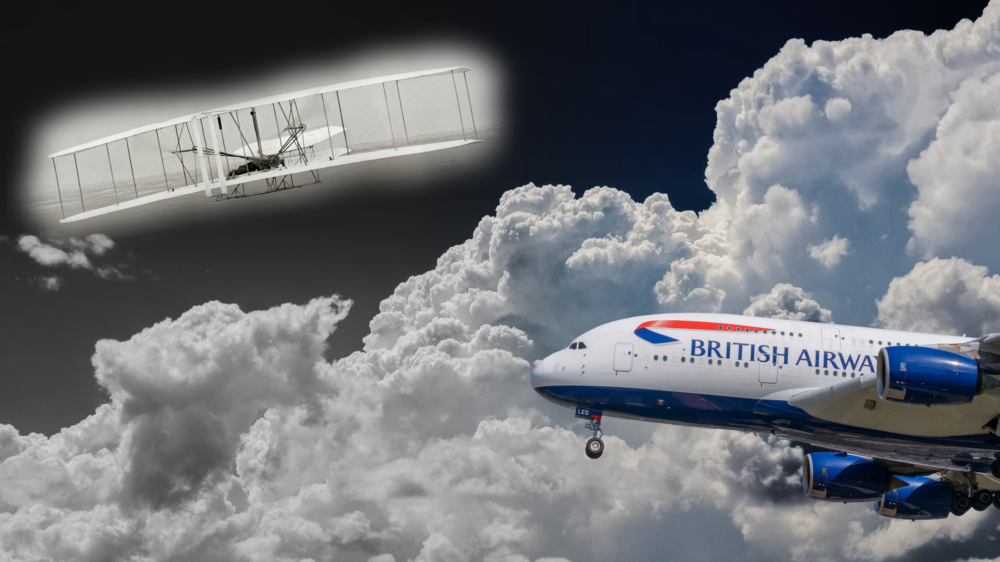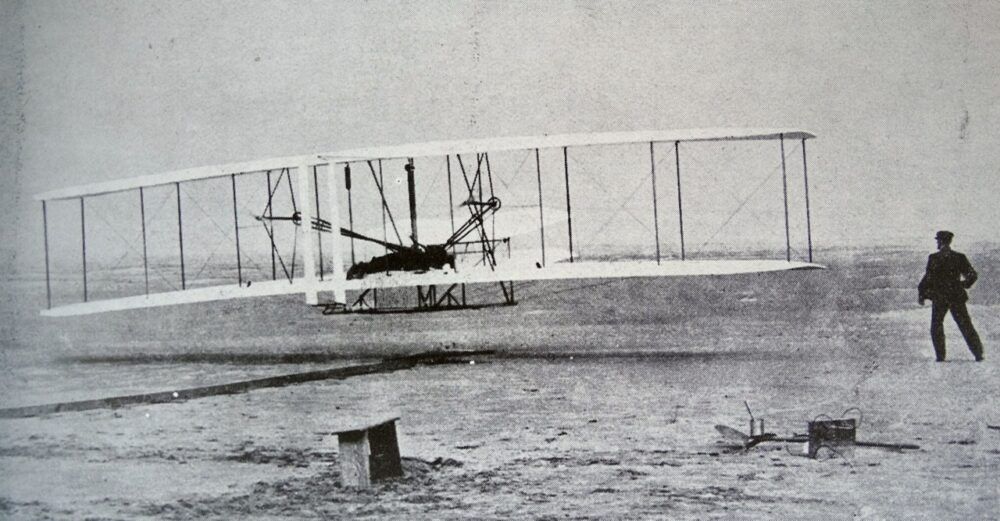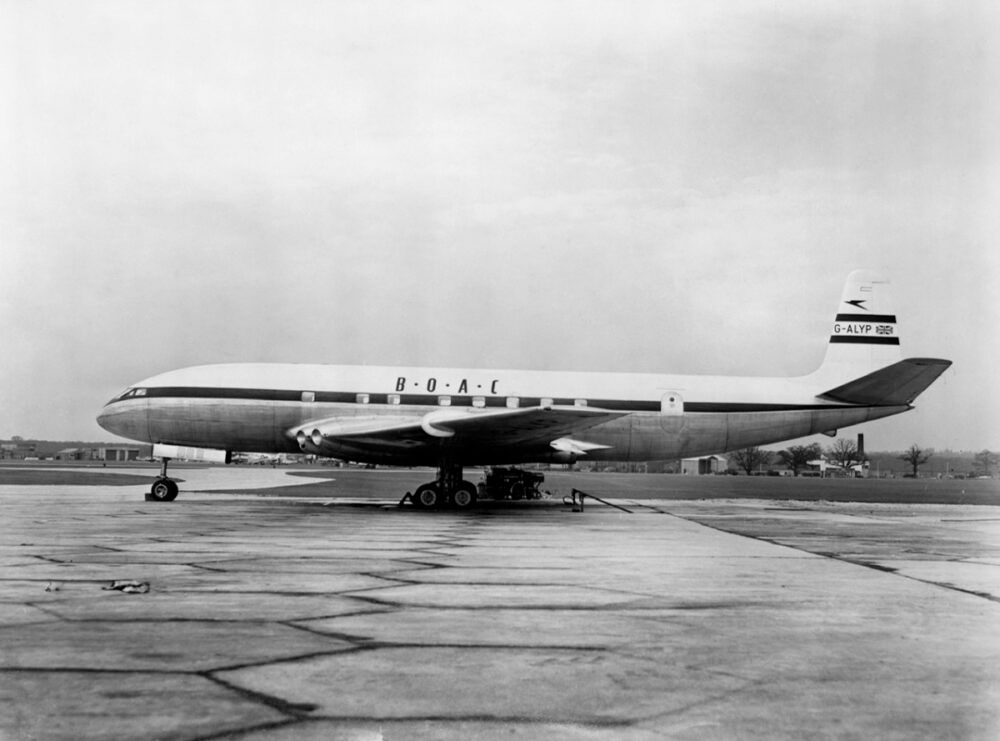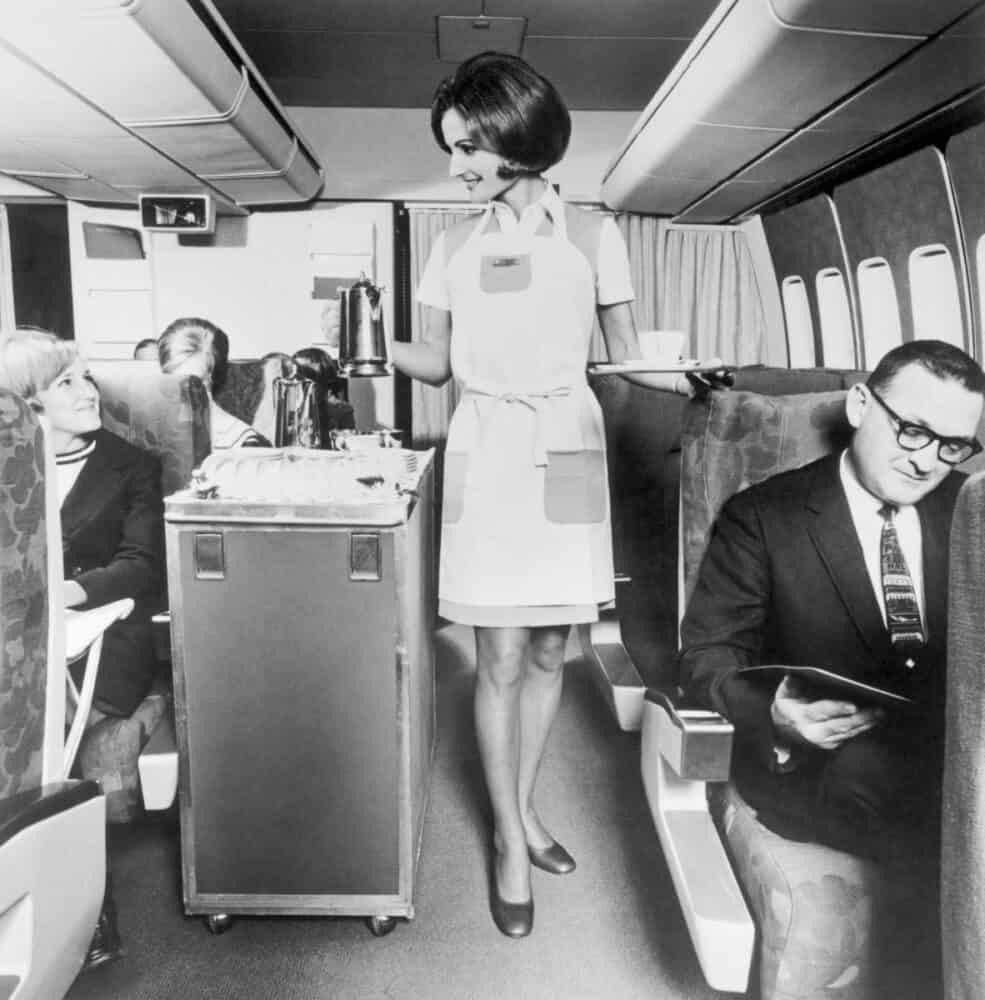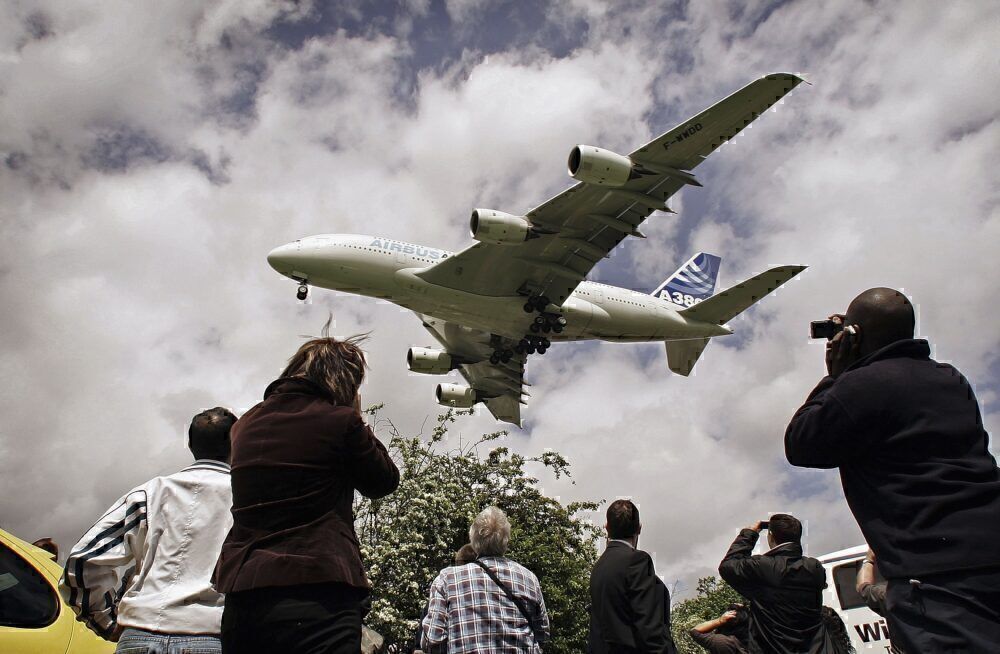Today marks 117 years since the Wright Flyer left the ground and performed the first successful heavier-than-air powered flight. The Wright brothers flew the model four times on December 17th, 1903, just south of Kitty Hawk, North Carolina. The achievements of this pair marked the start of an exciting journey for aviation for over a century.
In the beginning
Sadly, following those successful flights, Flyer was wrecked when a gust of wind got hold of the airplane and overturned it. The brothers took the wreckage back to Dayton, where it was further damaged by flooding in the locality some years later. It is debatable how much of the 1903 Flyer on display in the Smithsonian Air and Space Museum is original.
Nevertheless, the Wrights weren't going to give up easily. In 1908, they secured contracts in the US and France, which allowed a new aircraft to be developed. The new design was converted to carry a passenger, and in May of that year, Charles Furnas became the first aircraft passenger ever.
In the decades that followed the Wright Flyer's triumph, aircraft would play a crucial role in two world wars. However, the brothers didn't have this impact of aviation in mind when launching their legendary plane.
"That day at Kitty Hawk, we thought only of getting off the ground. Later we hoped that the airplane would be an instrument of peace, perhaps the instrument that would enforce peace," Orville Wright said in 1941, as reported by the Washington Post.
"We never thought that people would stand for such punishment as they have been taking in Britain today."
The pioneer went on to state that he didn't have any regrets. He envisioned that there would be a new era of civilian aviation after the war, all for the greater good.
Stay informed: Sign up for our daily aviation news digest.
The next level
Nonetheless, while flight would end up enabling new opportunities in the realm of war, war would, in turn, revolutionize flight throughout the 20th century.
The rise of several technological breakthroughs in commercial aviation came about after World War II. For instance, radar and cabin pressurization have become mainstays in the industry.
However, one particular innovation that became mainstream following the conflict would completely change the way people fly. This breakthrough was the jet engine.
Just four years after the war was over, the British Overseas Aircraft Corporation (BOAC) flew the first-ever commercial jet-powered airliner on July 27th, 1949. Subsequently, the carrier began the first-ever commercial jet service on May 2nd, 1952, with its de Havilland DH106 Comet flying from London to Johannesburg.
In just half a century, the world went from the humble Wright Flyer all the way to commercial jetliners. The latter allowed for travel across continents at quick speeds and in great comfort.
A whole new industry
The jet age would eventually allow for the Boeing 747 to enter into service in the 1970s. The Queen of the Skies would become the epitome of global aviation. It became the largest jet by passenger capacity at the time of its launch and offered plenty of room for movement in the cabin.
With jumbos becoming all the rage towards the end of the century, Airbus brought us the A380. This plane surpassed the 747 in size and capacity, and its introduction 103 years after the Wright Flyer took off from the ground indeed marked how far aviation had come.
Worlds apart
At the time of its first successful flight, the Wright Flyer could fit just one person. It had a length of 21 ft 1 in, a wingspan of 40 ft 4 in, and a height of 9 ft. Its empty weight was 605 lb, while its maximum takeoff weight was 745 lb. A straight-4 water-cooled piston engine helped to power the plane, giving it a speed of 30 mph. Notably, the first unit flew 120 feet and stayed in the air for just 12 seconds during the first successful flight.
In comparison, the A380 is certified for up to 853 passengers, has a length 239 ft 6 in, a height of 79 ft, and a wingspan of 261 ft 10 in. It has a maximum ramp weight of 1,238,998 lb and a maximum takeoff weight of 1,234,600 lb.
Four turbofan jet engines help the superjumbo to reach a maximum operating speed of 0.89 Mach and a range of up to 8,000 NM.
Learning from the past
Two-time Pulitzer Prize-winner David McCullough wrote a biography about the Wright Brothers, which was a New York Times Best Seller. In an interview with the National Air and Space Museum, the author touched on what modern innovators could learn from the siblings when tackling some of today's technological challenges.
"One is to know what you’re doing and pursue a background reading that isn’t limited in focus. Pay great attention to details. Don’t give up. Learn from your mistakes. Learn from your failures. And remember that insoluble problems have proven again and again to be soluble. I think we can all learn from them. I think they’re a great lesson in how to approach life," McCullough said.
"They had a joyous time, and their love of architecture, their love of art, their love of music, their love of literature—these are fully educated people. They are home-schooled as it were, but their home-schooling was right up to and almost equal to any great liberal arts training in any great university."
From supersonic flight to long-range triumph, there have been several groundbreaking feats over the last 117 years. There will undoubtedly be many more great adventures in aviation's future.
What are your thoughts about how far the aviation industry has come over the last 117 years? What do you expect from the scene in the future? Let us know what your thoughts are in the comment section.

